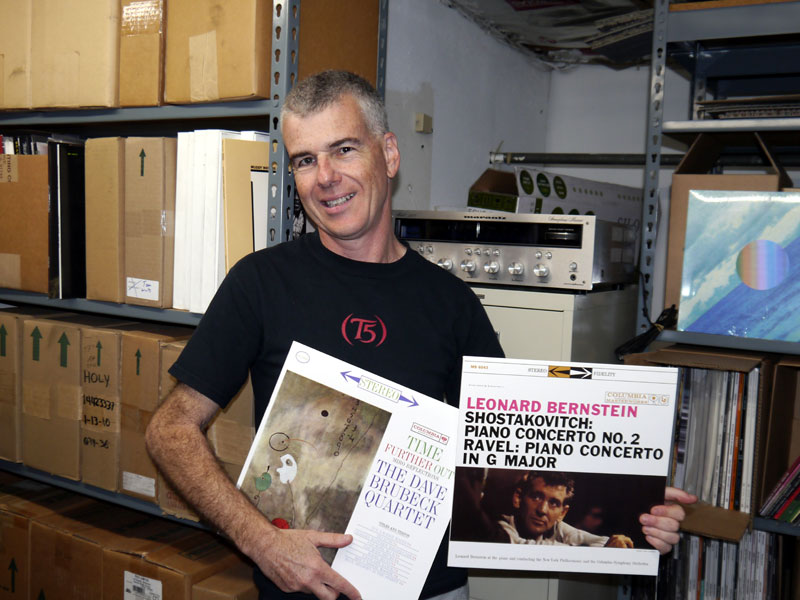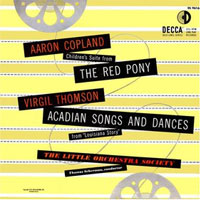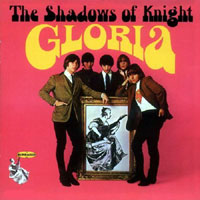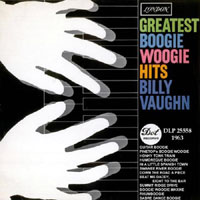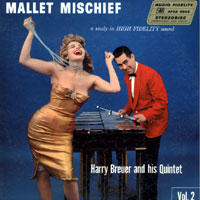Introducing Mr. Record
t was over three years ago that Marc Mickelson first invited me to write for his online magazine. The idea of becoming better known is something I find exciting but at the same time a little laborious. Figuring out what to write is one thing, but being able to catch the interest of my fellow audiophiles is a challenge. I’m simply not into all of the thrills that many audiophiles seek, like large multidriver/multitower speakers, which have never sounded right to me. I also loathe reverb-drenched smooth-jazz female vocals that have somehow become the standard for many of the people who afford these toys. In other words, while I consider myself a genuine audiophile, I am an outsider among people who regularly read audio magazines. So I wanted to bring something to the table that had not been brought before. Then an idea dawned on me as I was stuffing a recently purchased LP, High Fi-Esta by Edmundo Ros [London PS 105], onto a severely overcrowded shelf (one of many overcrowded shelves). Nobody ever talks about LPs like this, or talks about the amazing Blue Back pop records, the Decca color-bar country records, or the few Tomb Stone Columbias that sound amazing. In fact, the high-end press has done an excellent job scaring readers away from old mono LPs, unless they own a mono cartridge and preamp with adjustable playback curves. It’s amazing how many of these old LPs sound just wonderful and tonally correct played back with RIAA EQ, a stereo cartridge and the use of an old-fashioned mono switch.
But before I plunge into a series of record-collecting adventures, funny stories from audio shows, and other incidents lurking inside my brain, a little bit of history is in order. From 1999 to 2008, I was the domestic sales rep. for Cisco Music. As their resident record-collecting audio geek, I also played a big role in Cisco’s reissue choices. (Surely someone must have wondered why we reissued Ian and Sylvia.) I continue to do the same kind of work for Impex Records. Of course, my audio story starts years before I came to Cisco. In the late 1960s (I was born in 1959), my dad, who had been an audiophile in the 1950s (and built his own amp and preamp), practically banned AM radio from our house with regular reminders of how pathetic AM sound is. He also installed a crude AM/FM radio in his 1962 Volvo. This particular mono Panasonic radio had the annoying trait of drifting to the next-strongest station whenever you went around a curve, over a bump, or whenever it just felt like it. My mom hated that radio, but I liked the occasional tastes of the emerging underground FM. My dad’s classical music wasn’t too bad either, especially if it was the Tchaikovsky Violin Concerto or Pictures at an Exhibition. When my folks got divorced in 1971, my dad set up a stereo for my mom, my brother and me. It consisted of a Garrard changer and a pair of 12" Jensen coaxial speakers, and the heart of the system, a Fisher X101 integrated amp, with, of course, the original tubes. I have no doubt that the midrange magic of the Fisher tube amp planted something deep within me. In 1973 I moved in with my dad, and the audio got a lot better. It was a cool time to be a teenager -- or at least it felt that way at the time. Dad had Altec Coronas (with Altec A7 guts!) in ultra-chic Danish modern cabinets. The amp was an Altec integrated with tubes. At the time it didn’t occur to me that tubes were already a thing of the past. In fact, it took me a year and a couple of trips to Pacific Stereo to realize that tubes were actually gone. My dad also had a mono-only system that he used with a McIntosh C8 preamp and MI75 power amp (which is a rack-mount MC75). Looking back I realize that the Mac separates were better than the Altec integrated amp, but the Altec was stereo, and so were my recently purchased UK-pressed Beatles records. In case you are wondering what gear I'm listening to today, I’ll tell you. If you want to call me a retro-geek, go right ahead. System one
System two (bedroom)
As you can see, the only component for which I have bragging rights is my EAR preamp. I have owned a number of vintage tube amps, including a McIntosh MC225, an MC240, a Leak 50, and Quad Model 2s. Mr. Record has also spent many hours tweaking his system. I too have taken full advantage of the repeat mode on my CD player! Speaking of CD players, the high-end press has done another great job convincing people that old tube amplifiers can be great, but old CD players are poisonous. Funny. I find most high-rez demo recordings, like Patricia Barber's, poisonous to my ears! Some of the older CD players sound remarkably good, accurate, and far closer to analog than many of the high-end alternatives used by some of my friends. Of course, some of the older CD players sound really bad, but so does some very expensive high audio equipment. I have many burned CD-Rs from the same master tapes from which Cisco LPs were cut, so I can assure you that my digital front-end is doing its job very well. If you collect LPs the way I do, owning a second turntable is a necessity. Pushups may be good for your body, but not moving-coil cartridges, so having a second table allows me to explore uncharted grooves with less risk of damage to an expensive cartridge. My second 'table and cartridge need to play anything. Some LPs are not worth the time and cleaning fluid, but to know this you need to hear them. Turntable two also needs to sound good enough to tell me if an LP has potential. I really like the Luxman DQ 50 and the cheap Grado cartridges I’ve used on it. The Grados came in black, gray, and brown varieties, and they all sound the same. Trust me on that. The DQ 50 has a good 'arm, runs rock steady, and with some records it sounds better than my belt-drive Luxman. I love moving-coil cartridges. I won’t bore you with what we all know about them, because most of us feel the same way. I remember the days of MCs with rising top ends. For $10,000 you can still have one, but you won’t find that kind of cartridge in my system. My work with Cisco and Impex requires correct tonal balance -- and so do my ears. I’ve been very happy with the Dynavector DV 20X-H and DV 17D. The Denon I use now was the result of an LP trade, and it’s an interesting cartridge. Supposedly the '103SD is the premium variant of the famous conical-tipped '103. I haven’t been able to find much info on the '103SD, but it sold for twice as much as the standard '103. It does some things very well and other things just okay, which is exactly what I expected with a conical tip. It’ll do for now. The famous Denon bass is wonderful and a smooth top end allows me to check lacquers for Impex. The Grado/direct-drive-fed Yamaha sound is punchier. It’s nice to have as an alternative. I am a strong believer in using the right interconnects. I have a bag full or them, but I’ve never paid much in the way of money for any of them or considered cables worth discussion time. Since two of the pioneers of the high-end interconnect business are my uncle and his friend, Bob Hovland, good wires have always been easily accessible. I also use two Shakti Onlines in my main system. Where they work (and don’t work) has been as much a function of the equipment as it is the house in which the equipment resides. I also plug my tube preamp into a Triplite conditioner. Most high-end power conditioners do more harm than good, and my audiophile friends have proven this, sometimes even when they are trying to prove the opposite. The Triplite makes my EAR 864 sound better, but it takes the dynamics away from the Yamaha C-50. The way the Triplite emasculated the Yamaha is exactly what I hear with most high-end power conditioners. One of my friends hates the word "clean" when used in reference to audio. The Triplite made the C-50 sound very "clean," but not better. I hope you find my approach to audio entertaining at the very least. I won’t be politically correct. I’m always upsetting somebody, so I might as well do it by being honest. For the record, I don’t enjoy electrostatic speakers or Telarc CDs, and I like single-barrel bourbon more than single-malt scotch. I have a long history with electrostatic headphones, but the modern approach to electrostatic 'phones is to drive them directly (without transformers) with tubes. I don’t like the sound. It sounds like glue.
Finally, here are a few of the moldy oldies I've been spinning -- and loving -- recently. I provide this list, and the ones that will follow, so you know to grab these LPs when you see them at thrift shops or garage sales, which is where I found my copies. Aaron Copland: Children's Suite from The Red Pony Suite [Decca DL 9616] Here’s proof that film music can also be great music. There has never been a better recorded performance of this music than the one presented here. Previn made a good recording of it for Columbia, but as is so often the case with Previn, it’s boring. There’s nothing boring about this 1952 mono American Decca. The playing is inspired and the smaller orchestra brings clarity to the score that tends to get lost with a larger ensemble. The coupling work, Virgil Thompson’s Acadian Songs from The Louisiana Story, is nothing short of magical, and, by the way, the sound is to die for. Carlos Guzman: Tempo de Llorar [Bego LP-1019] Yup, another mono, and I don’t even speak Spanish! Living in Oxnard, California, has influenced me in terms of food and music. I almost passed on this LP, but then I read the back and noticed "96 Lagrimas" and Doug Sahm’s "She’s About-A Mover." I quickly realized that I was holding a very rare hunk of vintage Tex-Mex gold. Okay, not every cut is my thing, but the classic rockers are very well done and the traditional cuts are very charming. The sound is also amazing. The Shadows of Night: Gloria [Dunwich 666] This is one of the holy grails of '60s garage rock. I could hardly believe that I found it last year in a thrift shop. Usually some geek beats me to the '60s rock LPs, but not this time. I haven’t checked to see if this title came in stereo, but this mono copy sounds great. The version of Bo Didley’s "You Can’t Judge A Book By Its Cover" is worth the cost of the entire album, thrift-shop pricing or not. Billy Vaughan: Greatest Boogie Woogie Hits [Dot DLP 25558] I’m sure you were wondering if I was going to mention a stereo record. Am I the only audiophile who knows that Dot made great-sounding LPs? I almost passed on this one. Billy Vaughan may have been a decent saxophonist, but most of his white-bread music is forgettable, though he had moments, like this and The Shifting Whispering Winds. Two cuts here are sonic mind-blowers and the boogie-woogie pianist (who is unidentified) is incredible. This is a genuine audiophile delight. Leonard Pennario: Chopin Waltzes [Capitol P8172[ Collectors like me defend Pennario, and we've been doing it for years. He recorded some pop-oriented classics in the '50s (and did so very well), so some collectors have trouble taking him seriously. It’s amazing that the same snobs don’t acknowledge Pennario’s excellent chamber recordings made with Heifetz and Piatigorsky. Pennario made many fine Capitol and RCA LPs, and this mono Capitol is one of the best. Harry Brewer: Mallet Mischief [Audio Fidelity AFSD 5882] Hey, this record is just plain fun, and it’s a great
stereo demo record to boot. |

